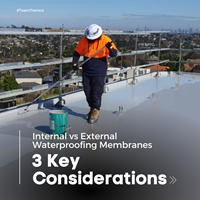Why is passive fire protection important?
1. Protecting lives and property
The most obvious reason why passive fire protection is crucial is that it helps prevent the spread of fire and smoke in a building. This is especially important in Australia, where bushfires and other natural disasters are common. By installing fire-rated walls, doors, and other barriers, passive fire protection helps contain fires and prevent them from spreading to other parts of the building. This not only protects the lives of occupants but also limits property damage.
2. Meeting building codes and regulations
In Australia, there are strict building codes and regulations that require buildings to have certain levels of fire protection. These codes are in place to ensure that buildings are safe for occupants and that they meet certain standards. Failure to comply with these codes can result in fines, legal action, and even the closure of a building. By investing in passive fire protection, building owners can ensure that they comply with these codes and regulations.
3. Reduce fire damage and minimizing business disruptions
Passive fire protection systems can help reduce the damage caused by a fire. By preventing the fire from spreading, these systems limit the amount of damage that a fire can cause. Additionally, the use of fire-resistant materials in construction can help protect the building structure and reduce the cost of repairs. In the event of a fire, a building may need to be evacuated, and operations may need to be suspended for a period of time. However, by investing in passive fire protection, businesses can ensure that the damage is limited and that they can quickly resume operations after a fire. This can help minimize the financial impact of a fire and ensure that businesses can continue to serve their customers.
 Waterproofing
Internal vs External Waterproofing Membranes - What are 3 Key Considerations?
Waterproofing
Internal vs External Waterproofing Membranes - What are 3 Key Considerations?
 Flooring, Waterproofing
Navigating the Depths: Challenges in Waterproofing and Coating Basement Car Park Decks
Flooring, Waterproofing
Navigating the Depths: Challenges in Waterproofing and Coating Basement Car Park Decks
